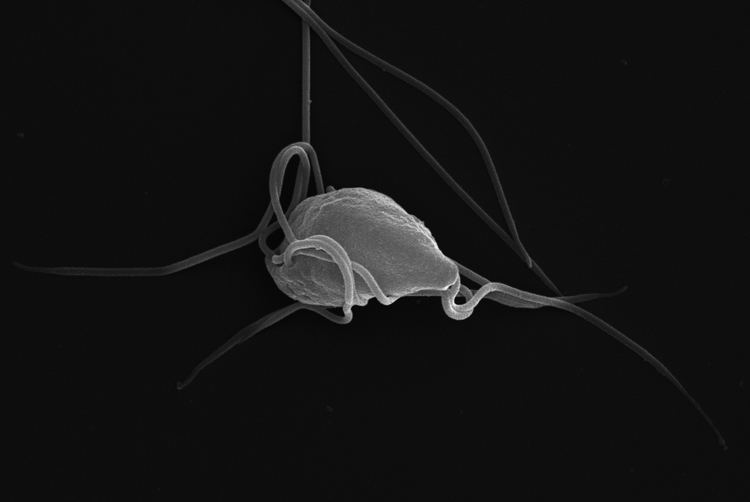Domain Eukaryota Order Diplomonad | Family Hexamitidae Scientific name Spironucleus salmonicida Rank Species | |
 | ||
Similar Spironucleus, Diplomonad, Carpediemonas, Octomitus, Metamonad | ||
Spironucleus salmonicida is a species of fish parasite. It is a flagellate adapted to micro-aerobic environments that causes systemic infections in salmonid fish. The species creates foul-smelling, pus-filled abscesses in muscles and internal organs of aquarium fish. In the late 1980s when the disease was first reported, it was believed to be caused by Spironucleus barkhanus. Anders Jørgensen was the person that found out what species really caused the disease.
There is a distinct lack of models for diverse microbial eukaryotes. Sprionucleus salmonicida was chosen as a model due to its complex genome and ability to adapt to fluctuating environments. This ability was proven by genetically modifying the pathogen and seeing the results. By comparing these results with the closest model organism, Giardia intestinalis, researchers were able to see that the parasite has a more complex gene regulation system. This system of genetic modification was also used to sequence the genome for further study.
Mitochondria related organelles (MROs) are believed to be found in Spironucleus Salmonicida. MROS identified in Spironucleus Salmonicida contained similar protein import and Fe-S machinery as in Giardia mitosomes and the MROS contained the enzyme characteristics similar to hydrogenosomes. Thereby affirming hydrogen production is prevalent in the Spironucleus genus. Hydrogenosomes produce ATP by substrate-level phosphorylation with hydrogen as a byproduct.
